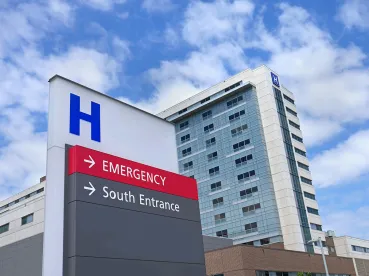DETROIT - If you or a loved one were a victim of medical malpractice at VA hospital, you may have the legal right to file a Veterans’ Administration Hospital lawsuit. These cases are similar to traditional medical negligence lawsuits with respect to the required elements to prove a case, but there are certain legal procedural differences. The law requires strict compliance with the Federal Tort Claims Act.
The Federal Tort Claims Act (FTCA) allows servicemen, military dependents, and other non-active duty victims of negligence to sue government agencies in federal court for injury committed by military doctors and other health care providers acting on behalf of the United States. This legal right extends both the military hospitals and military clinics that treat active duty military or veterans.
There are strict procedural requirements for filing a military medical malpractice case under the Federal Tort Claim Act (FTCA). These include submitting necessary forms and filing claims even before a lawsuit can be filed. The standard form that must be submitted is the Form 95.
The failure to comply with these requirements can result in a valid lawsuit being barred for technical reasons alone. The Form 95 is the start of the process and provides the government with formal notice of your claim. A U.S. Attorney assigned to the specific department will then become involved.
Once the Form 95 has been received by the proper government office, there is a waiting time before the lawsuit can formally be filed with the court. During this period, the U.S. Attorney may investigate the claim and even attempt to resolve before a case is filed with the court. The U.S. Attorney has authority to agree to a settlement within a specified dollar range, but can seek approval from a higher authority if the case merits compensation above the limited authority.
If the case cannot be settled, the lawsuit must be filed in the federal court system. Once filed and served upon the government, it will proceed like a traditional medical malpractice case. The parties will conduct formal discovery and take depositions of all essential witnesses. Once completed, the court may order the parties to a mediation to attempt to resolve the case. If it cannot be resolved, the parties will have a trial on the merits of the case and to determine if compensation is awarded.
Depending on the facts of the case, the plaintiff can be awarded both economic and non-economic damages. Economic damages are financial losses, like lost earnings or services. Non-economic losses are for pain and suffering, mental anguish, and disability. A plaintiff can be awarded a combination of both types of damages if the evidence supports such an award.
In the event of a death, the surviving family members can demand wrongful death damages. These damages are specified by the state law, but generally provide for compensation for the pain and suffering of the decedent prior to death and the loss of companionship by family members. There is no set guideline for these amounts and they are determined on a case by case basis.
Resources:




 />i
/>i

